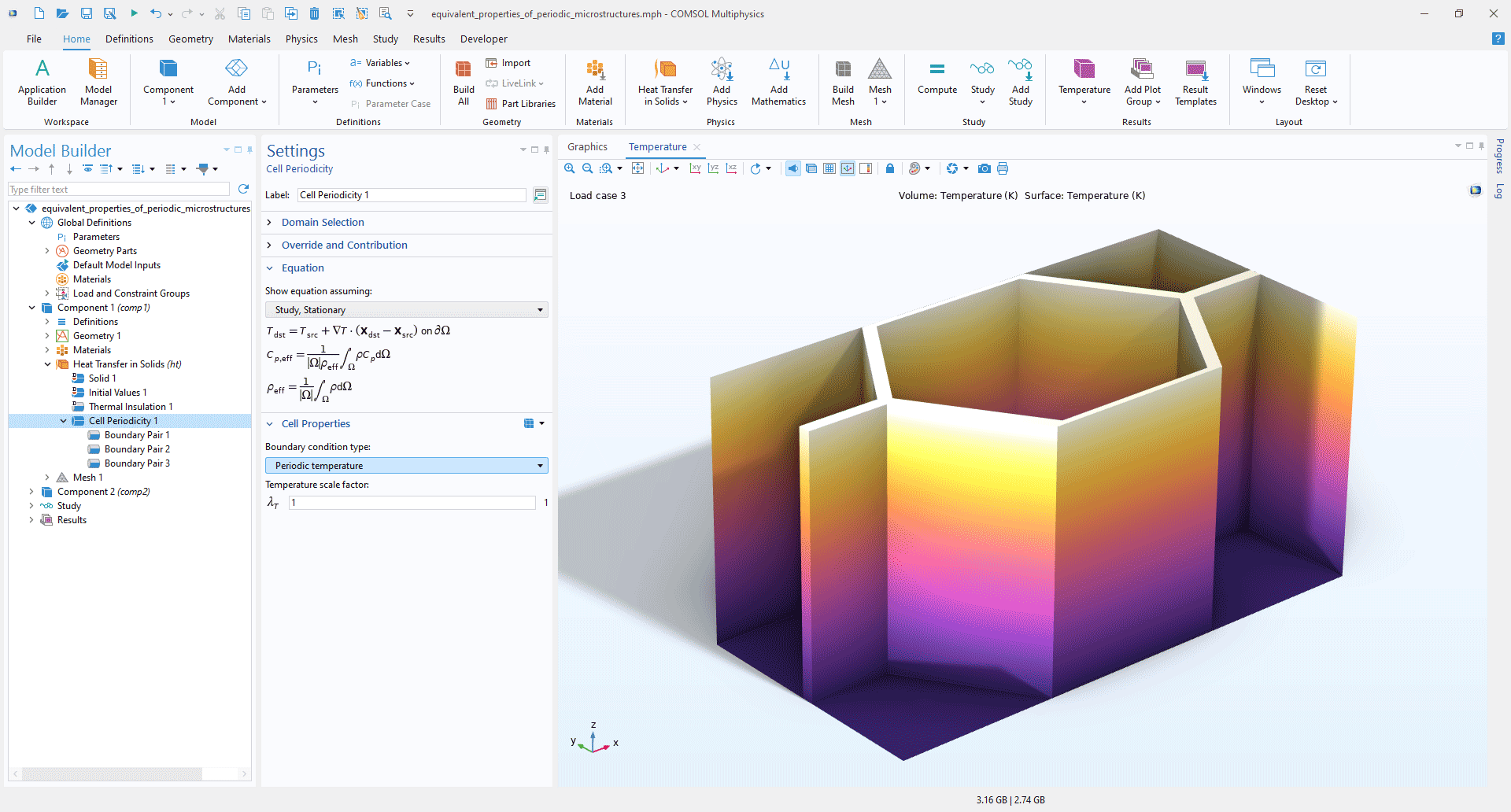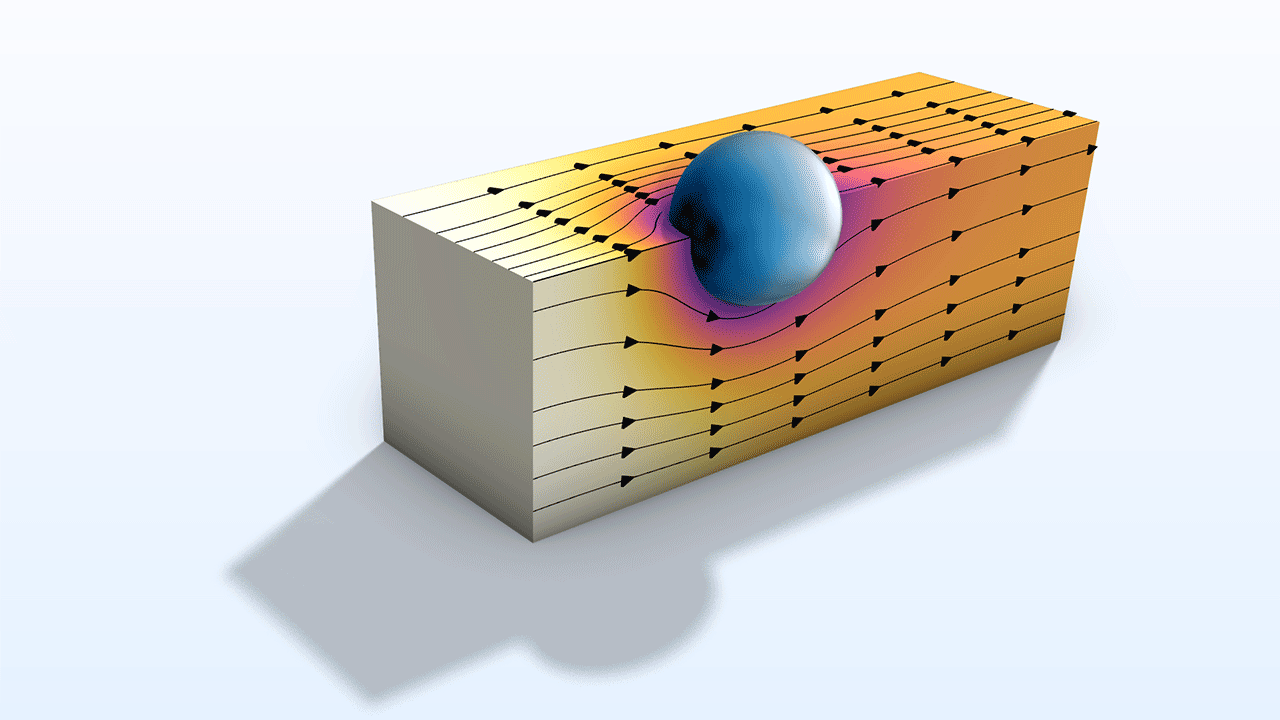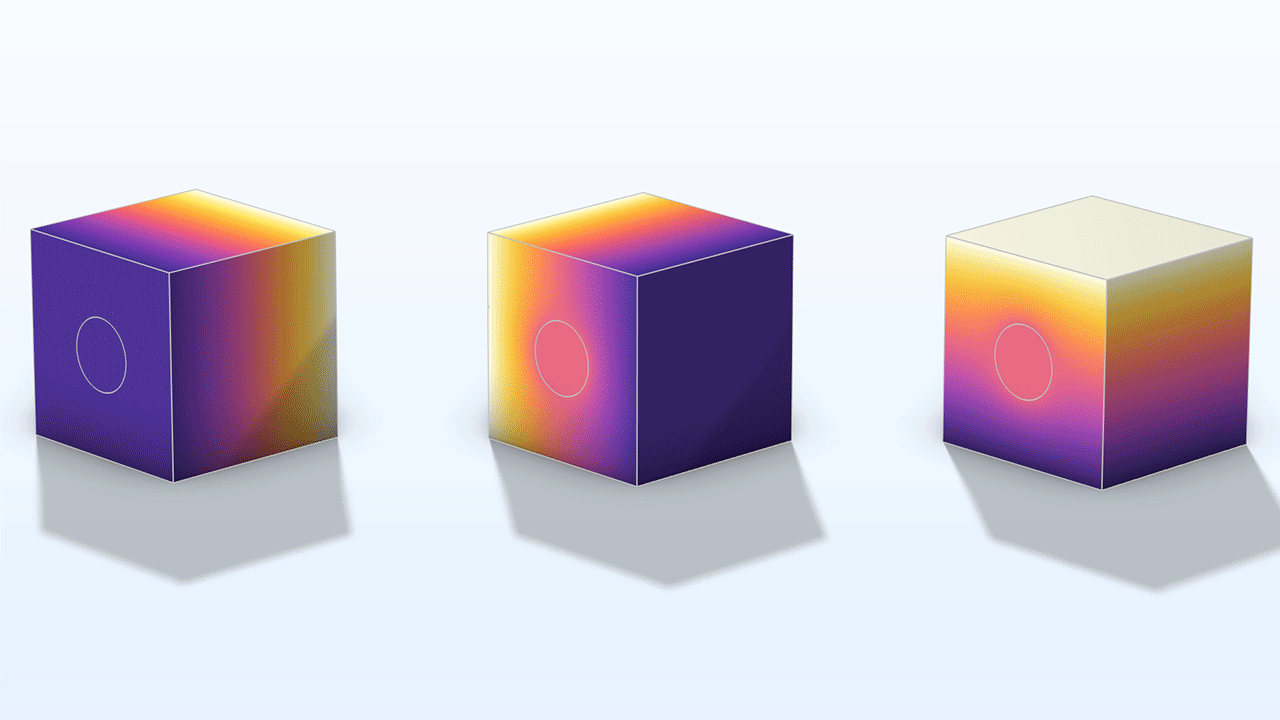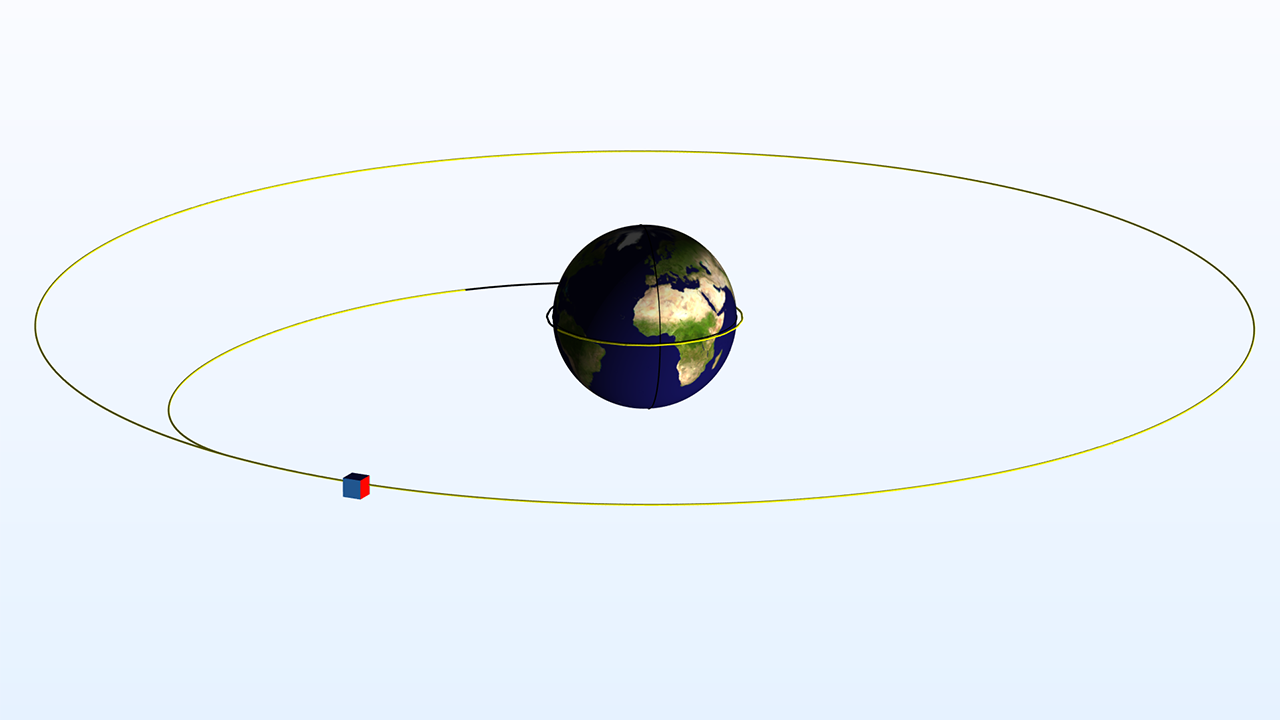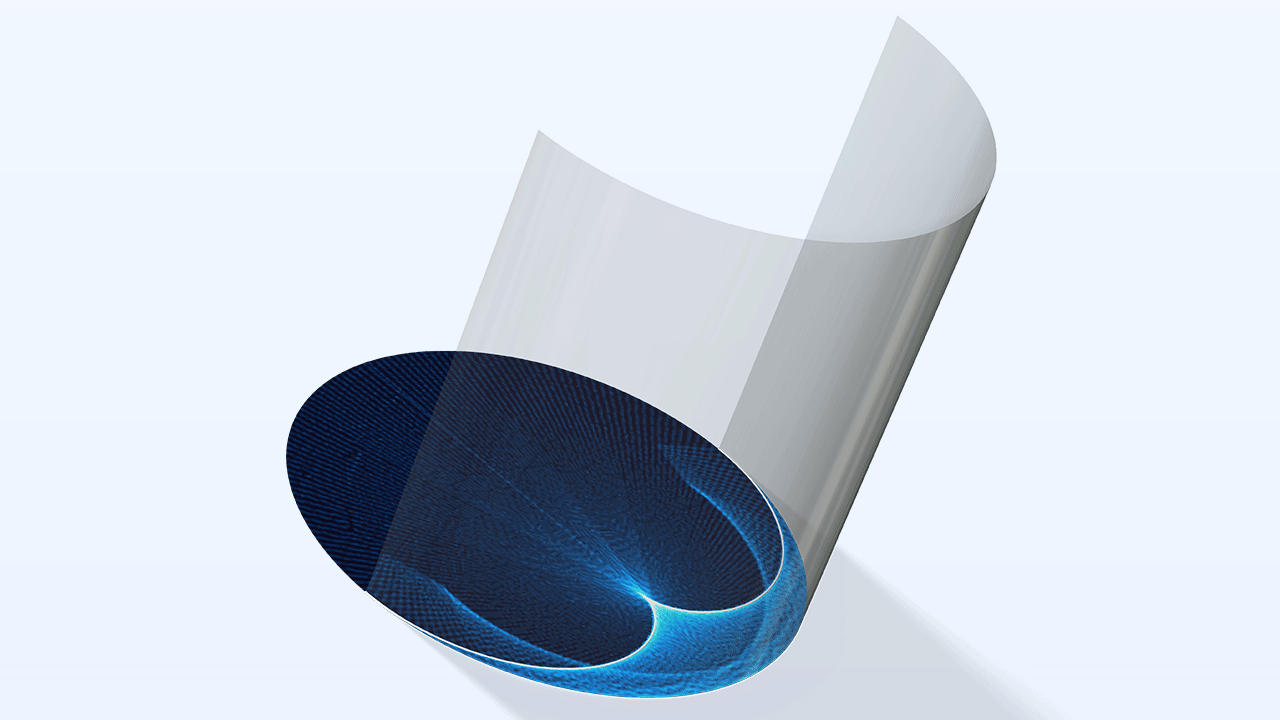Heat Transfer Module Updates
Moisture Transport in Porous Media
The nonequilibrium formulation for moisture transport in porous media can now be used to solve both relative humidity and liquid water saturation, extending the modeling applicability beyond equilibrium assumptions. This new functionality is available in the Hygroscopic Porous Medium feature.
Two new moisture transport interfaces are available in the Model Wizard. The first interface, Nonequilibrium Moisture Transport in Porous Media, computes both relative humidity and liquid water saturation in porous media without assuming vapor–liquid equilibrium. The second interface, Moisture Transport in Free and Porous Media, is parameterized to simplify the setup of models involving multiple coexisting media. A new Porous Interface feature also offers flexible modeling between various media, such as evaporation at interfaces. The new Superheated Steam Drying tutorial model showcases the Moisture Transport in Free and Porous Media interface and Porous Interface feature.
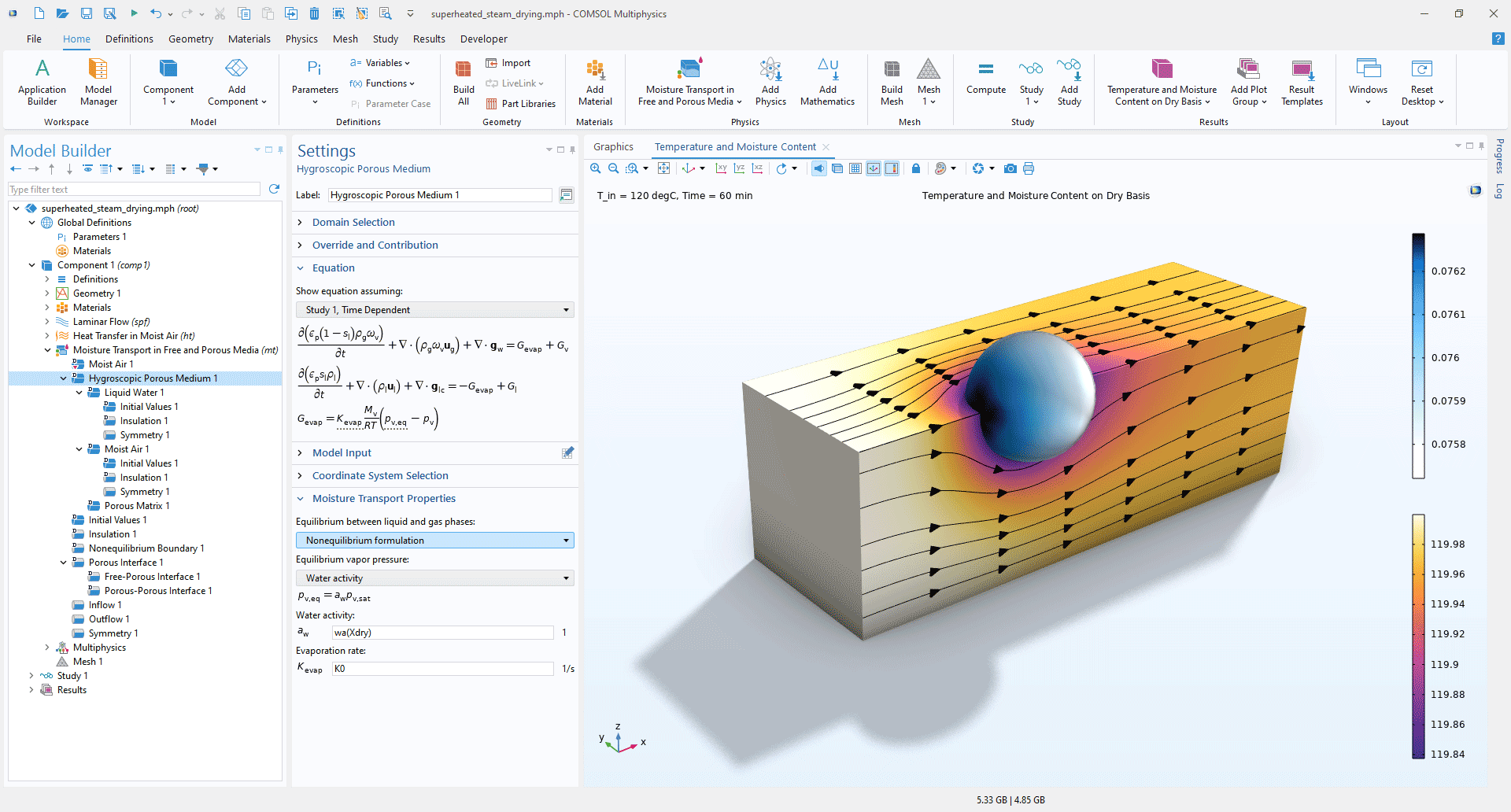
User-Defined Orbit for Orbital Thermal Loads
In the Orbital Thermal Loads interface, a new option enables users to freely define a spacecraft's position, enabling the modeling and analysis of radiative heat transfer during transfer orbits. This flexibility provides greater accuracy for simulating thermal loads on spacecraft throughout the extent of various orbital paths. The new Transfer Orbit tutorial model demonstrates this feature and simulates a transfer from a low Earth orbit to a geostationary one.
Homogenization of Material Properties for Heat Transfer
The new Cell Periodicity feature in the Heat Transfer interface estimates effective material properties for heterogeneous materials. Using the concepts of repeating unit cells (RUCs) or representative volume elements (RVEs), the feature computes the equivalent thermal conductivity tensor, heat capacity at constant pressure, and density for periodic or other structured materials. This feature provides an efficient method for modeling and analyzing heat transfer properties in heterogeneous materials. It can be viewed in the Equivalent Properties of Periodic Microstructures and Homogenization of Fiber Composite Thermal Properties tutorial models.
Performance Improvements for Thermal Radiation
For transparent media, a new Use adaptive resolution coarsening option is available with the Hemicube algorithm. This option adaptively coarsens the resolution by merging pixels with similar irradiation levels, reducing the memory required to solve models.
The Ray Shooting radiation method now supports the new Specular Mirror feature. This feature offers optimization and improved performance when modeling boundaries with pure specular reflection. A forward ray-tracing approach is also available for calculating the contribution of external radiation sources, enhancing accuracy for multiple reflections. For the Radiation in Participating Media and Radiation in Absorbing-Scattering Media interfaces, an alternative solver with dedicated stabilization has been introduced, providing efficiency in cases with numerous directions while maintaining similar memory usage as the default solver.
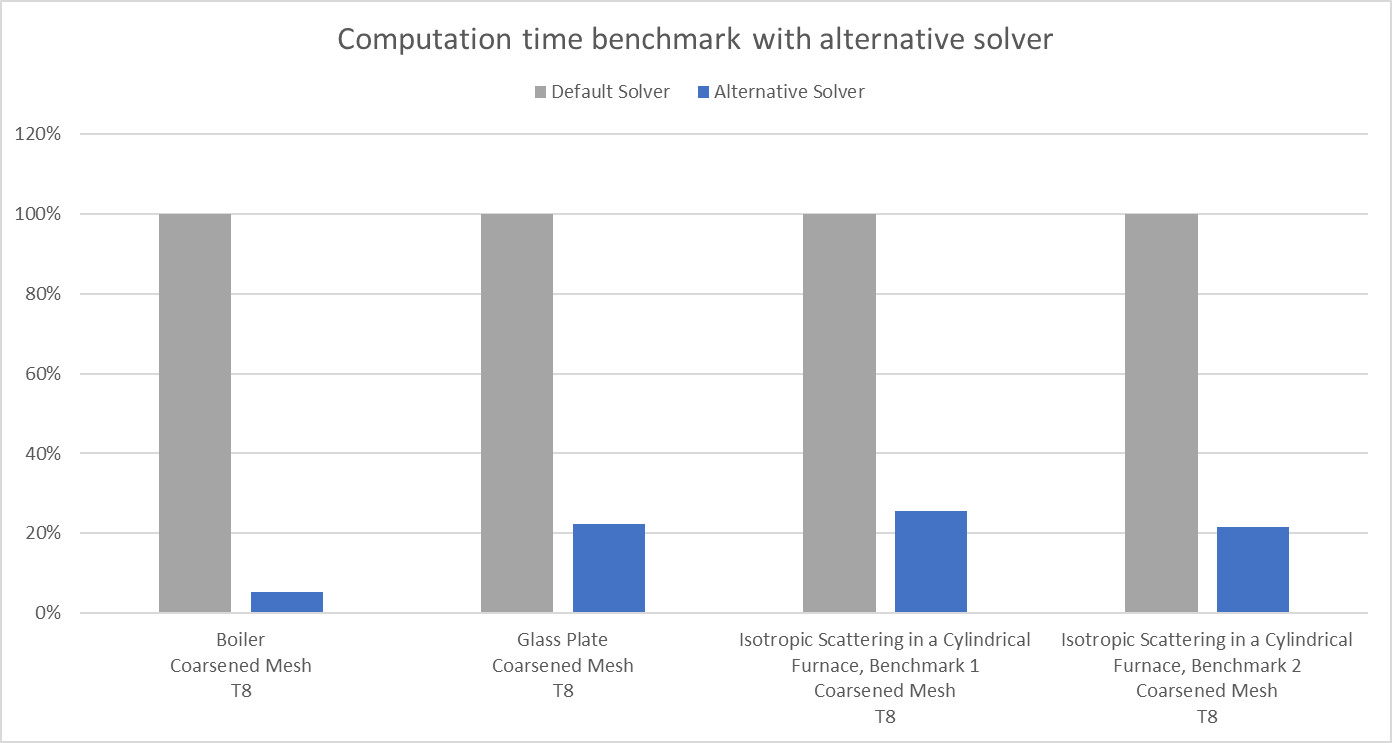
The Symmetry feature is also now available in the Radiation in Participating Media and Radiation in Absorbing–Scattering Media interfaces with the discrete ordinates method (DOM). With this method, the feature is restricted to flat boundaries aligned with the axes of the component.
These improvements can be seen in the following tutorial models:
New Tutorial Models
COMSOL Multiphysics® version 6.3 brings the following new tutorial models to the Heat Transfer Module.
Superheated Steam Drying of a Wood Particle
Modeling of the 3-Omega Method for Estimating the Thermal Conductivity of Nanostructured Materials
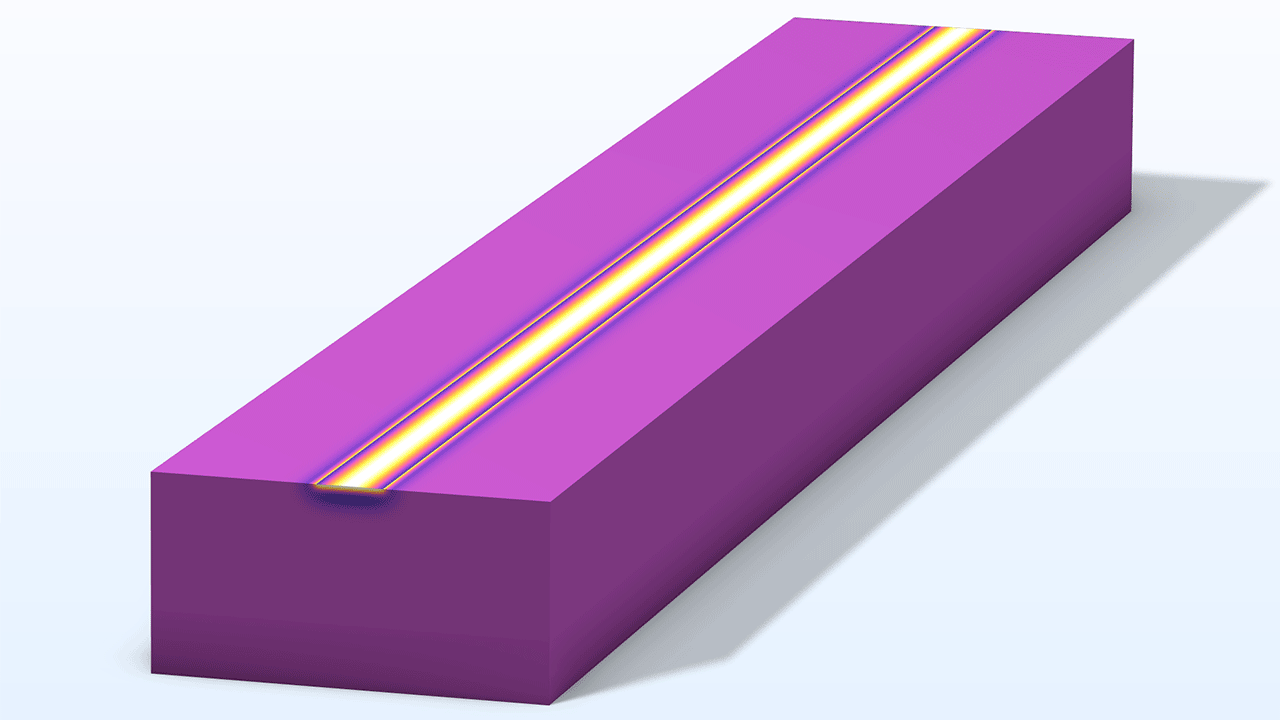
three_omega_method_for_estimating
_thermal_conductivity
Download from the Application Gallery

